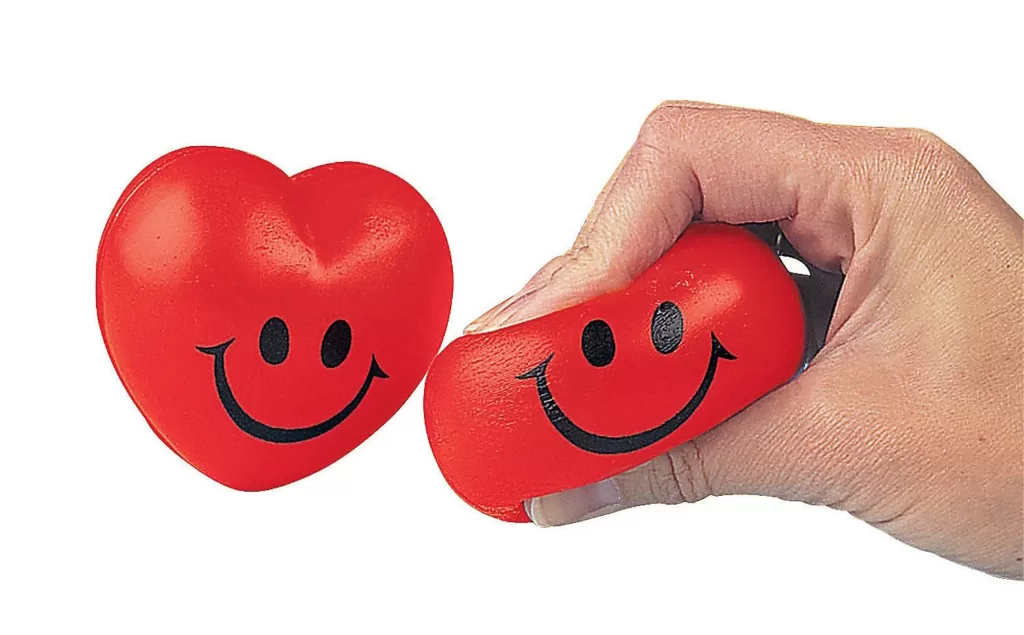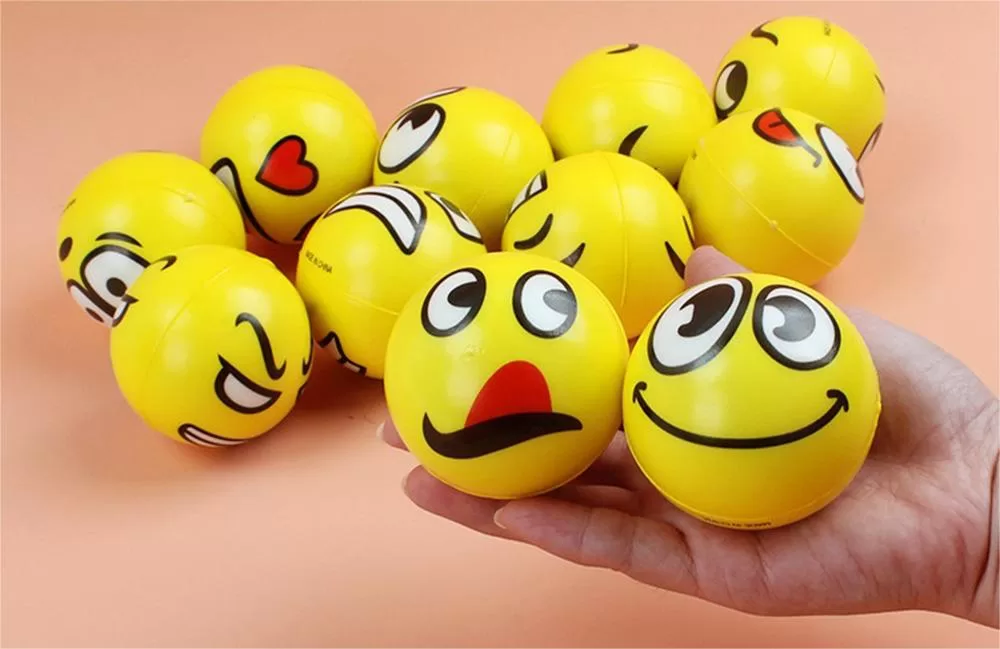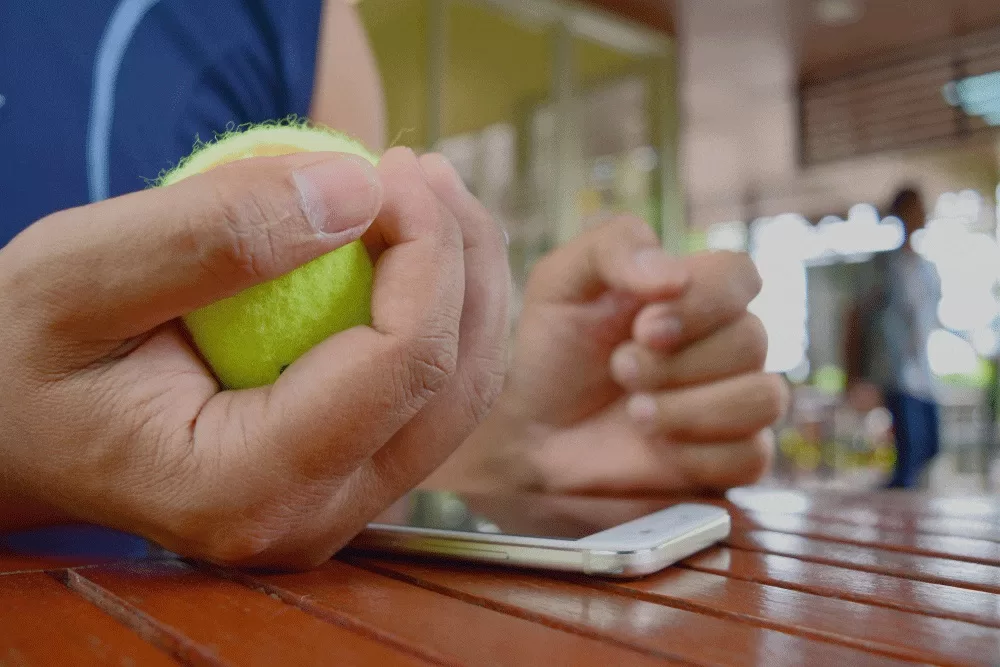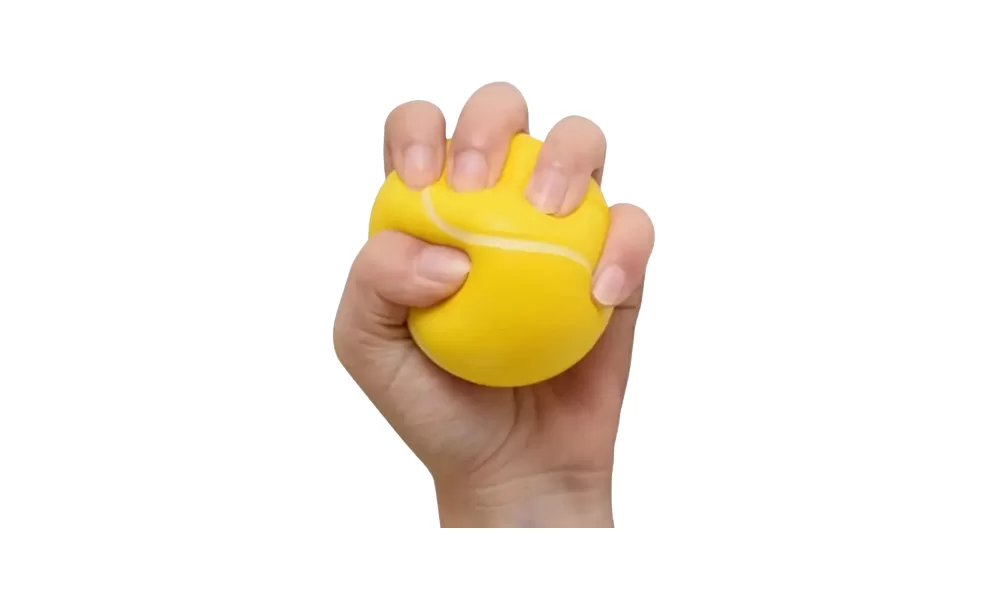В современной жизни люди уделяют все больше внимания физическому здоровью и спортивной тренировке, а тренировки по силе рук постепенно становятся своего рода вниманием к способу фитнеса. Полиуретановые шарики сцепления, как новый тип инструмента тренировок с силой ручной работы, предпочитают их превосходные физические свойства и использование. В этой статье мы рассмотрим мяч полиуретанового сцепления и представим характеристики и использование этого нового инструмента обучения ручной силы.

Что такое мяч для полиуретанового сцепления?
Полиуретановый шарик для сцепления представляет собой шарик для сцепления из полиуретанового материала, который является более мягким, более гибким, долговечным, менее склонным к скольжению и вызывает меньшее раздражение кожи, чем традиционные пластиковые или металлические материалы. Эти шарики сцепления могут быть использованы для реабилитации рук и подходят для людей всех возрастов и имеют функцию тренировочной руки, силы пальца и силы запястья, усиливая мышцы рук и суставы, а также помогают повысить чувствительность и координацию рук. Полиуретановые шарики сцепления доступны в разных весах и размерах, поэтому вы можете использовать их в соответствии с вашими личными потребностями.
Типы шаров сцепления и разные уровни
Ниже приведены некоторые из различных материалов шариков сцепления, а также их конкретные уровни и трудности:
- Полиуретановый шар для сцепления: этот материал является самым популярным и обычным шаром для сцепления. Он очень мягкий и гибкий и очень плотно подходит для руки. Общий уровень составляет 100-350 фунтов, и сложность примерно разделена на начинающие, промежуточные и продвинутые.
- Резиновый шарик для сцепления: он сложнее, чем полиуретан, легче скользить и труднее схватить. Следовательно, он имеет более высокий уровень сложности, обычно 350-500 фунтов
- Металлический шар для сцепления: вес относительно большой и используется для использования силы рук, запястий и пальцев. Общие материалы - сталь или алюминий. Уровень составляет около 100-350 фунтов, а сложность делится на начинающих и промежуточных.
- Пластиковый шар для сцепления: легче, подходит для начинающих. Уровень составляет около 20-100 фунтов, сложность делится на начинающих.
LBS - это единица измерения веса или прочности, эквивалентной фунтам в имперской системе. В поле для фитнеса LBS часто используется для обозначения веса или уровня веса или силового тренировочного оборудования, такого как шарики сцепления, гантели, штанги и так далее. Общие уровни веса составляют 20, 50, 100, 200, 300, 400, 500 фунтов и т. Д.
Преимущества и функции полиуретанового шарика сцепления
Полиуретановый шар для сцепления - это инструмент, специально предназначенный для обучения силы рук и укрепления мышц запястья и предплечья. Это может улучшить сцепление, ловкость и продолжительность руки, а также предотвратить травмы рук и улучшить силу пальцев.
Преимущества полиуретановых шаров
- Полиуретановый материал обладает высокой эластичностью, а долговечность нелегко деформировать, стареет и долговечен.
- Мягкая рука, удобная сцепление и хорошее ощущение рук могут снять усталость рук и напряжение.
- Компактный размер и легкий вес можно практиковать в любом месте и в любое время, очень удобно для переноски и использования.
Функции полиуретановых шаров
- Улучшение силы сцепления: в форме, чтобы соответствовать ручной рукоятости, удерживая шар для тренировок для тренировок, может значительно повысить силу сцепления руки.
- Улучшение силы пальца: каждая маленькая мышца в руке может быть нацелена на физические упражнения по отдельности, что повышая прочность и продолжительность пальцев.
- Упражнение мышц предплечья: тренировки, процесс удержания шар для сцепления требует использования мышц предплечья для поддержки, чтобы получить упражнения мышц предплечья.
- Профилактика травм рук. Упражнения для мышц ручной работы могут предотвратить травмы рук, особенно для профессионалов, которым необходимо выполнять тяжелый физический труд, очень полезны.
- Улучшение ловкости рук: обучение может улучшить ловкость рук, что делает руку более гибкой и точной.
- Выпуск стресса: постоянно сжимая и замесившись, вы можете высказать свои эмоции, чтобы освободить стресс.
Как правильно использовать?
Следующие методы и методы доступны для использования шариков полиуретанового сцепления.
- Выберите для вас правильный шарик для сцепления. Новички могут выбрать меньший диаметр, более легкий массовый мяч для тренировок и постепенно перейти к более крупному и более тяжелую мяч.
- Держите мяч сцепления и крепко слейте мяч, чтобы он плотно прилегает к центру вашей ладони. Скщайтесь примерно в течение 5 секунд, затем медленно расслабьтесь около 5 секунд.
- Повторите шаг 2 для столько сетов, сколько вы можете и чувствовать себя комфортно. Как правило, поезда 3-5 комплектов в день, с 8-12 повторениями на комплект.
- Вы можете постепенно увеличить продолжительность и сложность тренировок, такие как удержание мяча с помощью удара, а также поворачивать его вбок и так далее.
- Поддерживайте хорошую осанку при использовании мяча для полиуретанового сцепления, чтобы избежать скручивания запястья или причинения боли.
- Обучение с ручным мячом - это лишь один из способов тренировки сил ручной работы, чтобы быть более полным и эффективным обучением, также следует сочетать с другими методами обучения, такими как гантели, штанги и так далее.
- Шары для сцепления часто загрязнены ручным потом и жирной смазкой, поэтому их следует регулярно чистить для поддержания гигиены и чистоты.
Меры предосторожности при обучении
Чтобы тренироваться более эффективно и безопасно с полиуретановыми шариками сцепления, вы должны знать о следующем:
- Начните с выбора мяча с начальным весом, который вам подходит, а затем вы можете постепенно увеличить вес.
- Полиуретановый шарик для сцепления должен прилегать к плотному в ладони, чтобы избежать пробелов.
- При использовании шар для сцепления вы должны расслабить мышцы руки и плеч и избегать использования других мышц вместо мышц рук, чтобы завершить упражнение.
- При удержании шар для сцепления следует обратить внимание на однородность захвата, чтобы избежать чрезмерной кривизны или внешнего скольжения пальцев, что может привести к травмам запястья и локтя.
- Постепенно адаптируйтесь к упражнениям и постепенно увеличивайте сложность упражнений, чтобы избежать болезненности мышц и травм, вызванных слишком большой практикой в течение короткого периода времени.
- Пейте достаточно воды, чтобы ваше тело увлажняло, чтобы избежать обезвоживания.

Для категорий людей?
Шар для сцепления - это инструмент для упражнений для мышечной силы и тренировки на выносливость для следующих людей:
- Спортсмены: Grip Ball играет важную роль в силе, выносливости и координационной тренировке спортсменов, таких как тяжелая атлетика, триатлон, бокс и другие виды спорта, которые требуют силы рук, и выносливость может быть улучшена с помощью мышечной силы и выносливости рук.
- Офисные люди: люди, которые используют компьютеры и мобильные телефоны в течение длительного времени, часто имеют натяжение мышц рук, часто имеют ручную онемение, боль в руке и другие проблемы, использование шарика сцепления может облегчить напряжение мышц рук, а также увеличить силу мышц рук и выносливость.
- Игроки музыкальных инструментов: некоторые музыкальные инструменты, такие как гитара, пианино, аккордеон и так далее. Нужна сила и чувствительность мышц рук, использование шар для сцепления может улучшить мышечную силу и чувствительность рук, чтобы достичь лучших результатов игры.
- Реабилитационные пациенты: мышцы рук не получают достаточного количества упражнений, легко производить атрофию мышц рук и другие проблемы, мяч сцепления может помочь пациентам реабилитации восстановить мышечную силу и выносливость за счет постепенной адаптации силовых упражнений.
Время и частота обучения
Время и частота тренировок с полиуретановым шаром сцепления варьируются от человека к человеку, но обычно рекомендуется держать мяч примерно 15 минут на тренировку и тренироваться 2-3 раза в неделю, причем не более двух дней между сессиями. Новички должны начать практиковать с более низким отскакивающим мячом и постепенно увеличивать отскок, чтобы избежать боли и болезненности в руках. В то же время, внимание должно быть уделено правильному способу удержания мяча, чтобы избежать травм руки, вызванных слишком долгой удерживанием мяча или слишком плотно сжиманием.
В сочетании с другими упражнениями и методами практики
- Обучение штанги и гантели: при использовании штанги или гантелей для силовых тренировок добавление полиуретановых шариков сцепления может увеличить силу и устойчивость рук и стабильность.
- Тренировка подвески: использование мяча для полиуретанового сцепления во время тренировки подвески может повысить силу сцепления и работать мышцами рук и середины спины.
- Упражнения для удлинения пальцев: поместите в руку мяч для полиуретанового сцепления, осторожно схватите его, затем раздвиньте пальцы как можно дальше и повторите десять раз.
- Упражнение по инверсии пальмы: поместите мяч для полиуретанового сцепления в ладонь, выпрямите руку и поверните мяч внутрь, повторите десять раз.
- Упражнение по скручиванию запястья: удерживайте мяч полиуретанового сцепления в руке, выпрямите руку, скрутите запястье вверх, а затем поверните его вниз и повторите десять раз.
Общие ошибки в тренировке
Ошибки
- Чрезмерное использование: чрезмерное использование может привести к напряжению мышц рук, болезненности и травмы. Интенсивность тренировок и время должны быть постепенно увеличены.
- Неправильная сцепление: неправильная сцепление может вызвать боль и травмы запястий, рук и плеч. Правильная хватка состоит в том, чтобы держать мяч в одной руке и крепко удерживать его вверх и вниз.
- Использование неправильного веса: слишком тяжелый или слишком освещенный сцепление с мячом может быть вредным для силовых тренировок, и следует выбрать правильный вес.
- Неправильная частота тренировок: тренировки слишком часто могут привести к чрезмерному использованию и мышечной напряженности, а время и частоту тренировок должны быть разумно организованы.
Предостережение
- Постепенно увеличивайте объем и интенсивность обучения, не используйте больше интенсивности, чем вы можете справиться в начале.
- Выберите правильную сцепление, чтобы избежать рук, запястья и травм плеча.
- Выберите соответствующий вес шар для сцепления, чтобы избежать плохих результатов тренировок или мышечной напряжения.
- Распространение времени обучения и частоты разумно, один или два раза в неделю может быть обучение.
В заключение, мяч для полиуретанового сцепления является отличным учебным инструментом, но он должен использоваться с надлежащей осанкой и частотой, чтобы избежать травм. Если есть какая -то боль или дискомфорт, вы должны немедленно прекратить тренироваться и проконсультироваться с врачом или тренером за советом.
Обслуживание
Правильное обслуживание и уход могут продлить срок службы полиуретановых шаров сцепления, вот несколько предложений:
- Очистите регулярно: используйте влажную ткань или бумажное полотенце, чтобы очистить поверхность мяча, чтобы избежать накопления пота и грязи.
- Держите сухой: шарики сцепления должны храниться в сухом месте, чтобы предотвратить влажность и рост плесени.
- Храните правильно: шарики сцепления должны храниться при комнатной температуре или низкой температуре, не хранения их в горячей среде слишком долго.
- Избегайте воздействия солнечного света. Длительное воздействие солнечного света вызовет пожелтел и деформацию полиуретановых шариков.
Короче говоря, надлежащий уход и поддержание полиуретанового шар для сцепления могут продлить свою жизнь, а также обеспечить безопасность и эффективность обучения.

Заключение
Эти шарики сцепления, изготовленные из полиуретанового материала, выделяются своей мягкостью, гибкостью и долговечностью. Они особенно полезны для повышения силы сцепления, силы пальцев и мышечной силы предплечья. В то же время, постоянно сжимая шары, вы можете освободить свои плохие чувства, а также снять стресс. Это идеальный инструмент для ручных упражнений и стресса в одном.

